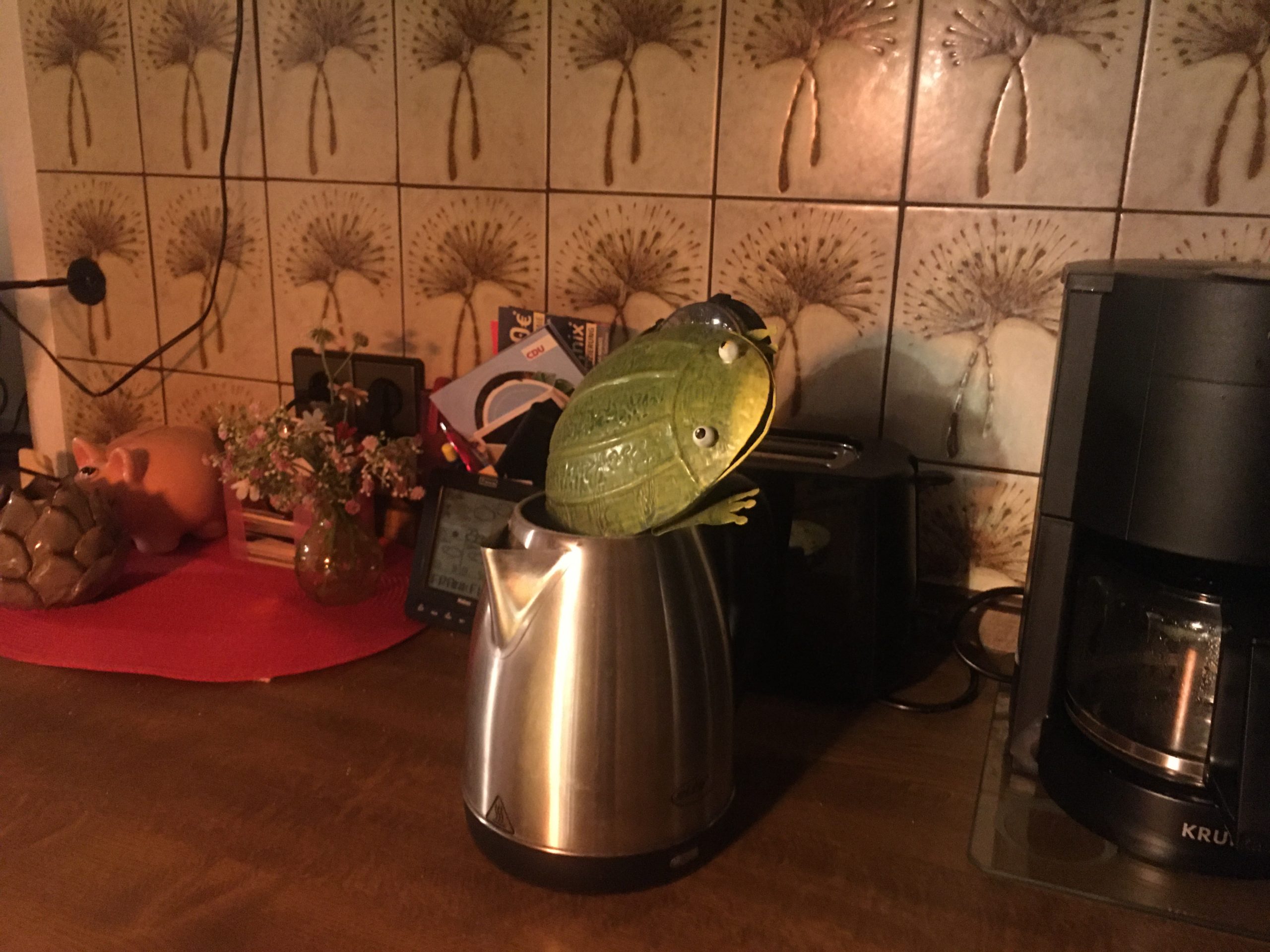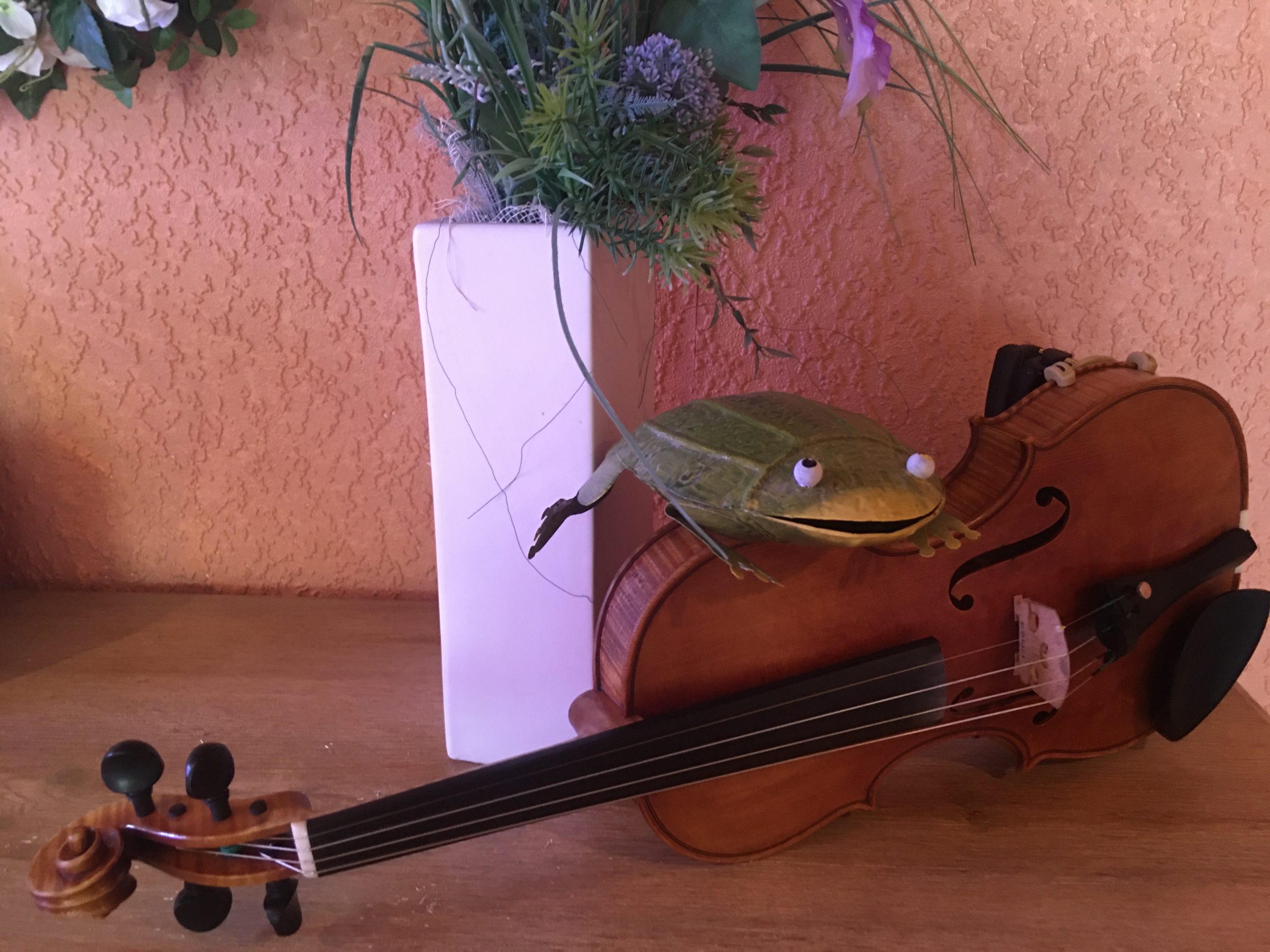If you’ve ever found your fingers have drifted out of tune without you realising it, then you’re falling into the same trap as the boiling frog!
Do you know the apocryphal story? It’s not very nice, so if you’re a frog lover, brace yourself…
A scientist places a frog in a pan of boiling water, and the frog immediately jumps out again, because it feels the heat! It reflexively understands that will be boiled alive if it doesn’t escape straight away…

The scientist then puts the frog in a pan of cold water, and sloooowly heats up the pan, until the water is boiling. The frog doesn’t realize that the water is heating up until it is too late...
Poor frog!
With your left hand finger placement, don’t be the boiling frog!
If you’re only ever thinking about the next finger placement, you’re not going to notice what’s going on around you … just as the frog didn’t notice that the scientist was heating up the pan of water!
Be aware of what's going on around your fingers
The thing is, good intonation requires not only a clear sense of what the next pitch is …
… but also an objective awareness of where your hand is in space and time!
Here’s a useful exercise that you can apply to any scale, piece, or indeed any other piece of music that you might be looking at in your practice!
If you do this slowly and carefully, whilst listening deeply to what you are playing, carefully imagining the sound of the next note each time, then soon you will be playing more in tune.
But as you do this, remember what happened to the boiling frog … make sure to check your hand and arm position every time you change note!
Then you'll always be aware of what is going on around your fingers ... in particular, whether your hand and arm position is correct!

Please visit our sponsors:
London String School - Tuition for Adult Learners in London
MusicLand - Creative Music Products for Teachers and Learners
Please visit our sponsors:
FiddlerShop.com - Quality instruments at an affordable price
London String School - Tuition for Adult Learners in London
MusicLand - Creative Music Products for Teachers and Learners
